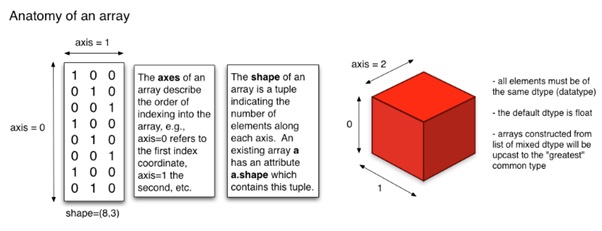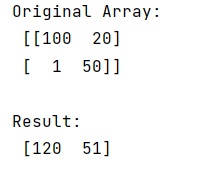Home »
Python »
Python Programs
How does the axis parameter from NumPy work?
Learn, how does the axis parameter from NumPy work in Python?
By Pranit Sharma Last updated : December 22, 2023
NumPy is an abbreviated form of Numerical Python. It is used for different types of scientific operations in python. Numpy is a vast library in python which is used for almost every kind of scientific or mathematical operation. It is itself an array which is a collection of various methods and functions for processing the arrays.
Understating the working of axis parameter
We can understand the concept of axis with the following image representation:

The shape of the (boolean) array in the above figure is shape=(8, 3). The ndarray.shape() will return a tuple where the entries correspond to the length of the particular dimension. In our example, 8 corresponds to the length of axis 0 whereas 3 corresponds to the length of axis 1.
In other words, when we need to operate some function on a row, we use axis=1 and in the case of a column, we use axis=0.
Let us understand with the help of an example,
Python code to demonstrate how does the axis parameter from NumPy work
# Import numpy
import numpy as np
# Creating a numpy array
arr = np.array([[100,20],[1,50]])
# Display original array
print("Original Array:\n",arr,"\n")
# Finding sum of array along the row
res = np.sum(arr,axis=1)
# Display Result
print("Result:\n",res)
Output

Python NumPy Programs »
Advertisement
Advertisement